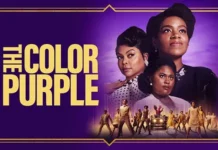To consider the future of not just mental health care or psychiatry but of our culture as a whole, we “grown ups” should not assume we can see all the avenues of change needed on our own. If we do not source the wisdom of the younger people among us for their vision of what is needed, what they experience day to day, the pressures that are built into their lives, or the traumas they endure and that follow them into adulthood, all of our planning for a better future will fail.
The “Beyond Labels and Meds: What It Feels Like To Be Me” exhibit includes 28 artworks in a variety of mediums including painting, photography, and music created by teens ages 13 to 18 from a range of backgrounds and genders. Their work is a powerful reminder of the strength and creativity of young adults as they navigate the stress, social pressures, and cultural turmoil of today’s world. Teen life can be very hard, very complicated, and it can also be full of promise and potential. So it felt deeply important to give teens the opportunity to speak out about their lives in the context of the rising distress we have seen in this age group throughout the COVID-19 pandemic. The exhibition stands as a reminder, too, that the transformative and healing power of art can make a difference in our individual and collective lives no matter what our age.
Family Resources Editor Miranda Spencer and I were extremely honored to have been a part of this exhibition and to have had the opportunity to see and highlight the amazing creativity of the teen artists included. As the submissions came in, we were reminded of the raw force of the uninhibited creativity of young people whose imagination produces profoundly moving, courageous, and beautiful artwork.
Yet too often, sensitive young artists are stigmatized for their way of seeing the world and more importantly, feeling in the world. It is an intense experience to be a teenager, and their art shows it. Adults so often want to whitewash the experiences of today’s youth, assume they are not exposed to the daily horrors adults face, somehow believing that our protection renders them immune to the world’s ills. But as we see in the artwork in this collection, teen life is as, if not more, full and complex than adult life. It is extremely important to recognize and validate those teen lives as we open ourselves to hear their voices and their stories.
In the upcoming weeks, we will be spotlighting four teen artists in a series of interviews in which each young person is given a chance to further talk about their art practice and their thoughts on being a teen today.
Click here to view the exhibition.
****
MIA Reports are supported, in part, by a grant from The Thomas Jobe Fund.





Good post
Report comment
The link to the works does not allow one to view the artwork.
Report comment
Some Else, after you click on the link to go to the gallery, click on the image of each artwork you want to see and it will open up in a window.
Report comment
Thanks, Miranda, it works on my phone, but not on my computer. On my computer the images don’t even show up to click on. I don’t know why.
Very impressive artwork! Just wish I could see it larger on my computer. Thank you, MiA and Karin, for highlighting the importance of the arts as a valid communication tool, and as a healing activity.
Report comment
Wow, this was excellent! Both the essay and the many and diverse artworks by the teen artists. I loved that so many different arts were included, so that songwriters and poets and others were featured as well as visual artists. Thank you!
Report comment
I think young and old people alike need to know the truth about American psychiatry: it isn’t even designed to cure anyone. Synthetic psych drugs are deliberately made to only suppress a patient’s symptoms until he or she dies because that’s what brings in the highest profits. The problem is not that mental illness is incurable. It’s been curable for close to 200 years, just not with man-made chemicals. Why isn’t the American Psychiatric Association in favor of integrative, restorative mental health care? It’s because almost all their income would disappear, IMHO. The APA has been fighting these approaches for about 100 years. No one makes a dime off mentally well people. The APA has been fighting the “Orthomolecular Approach,” for example since about the 1940s. That’s the approach that cured one of my family members several years ago. It’s wonderful. –Linda at FB “Real Recovery for Mentally Ill Loved Ones”
Report comment